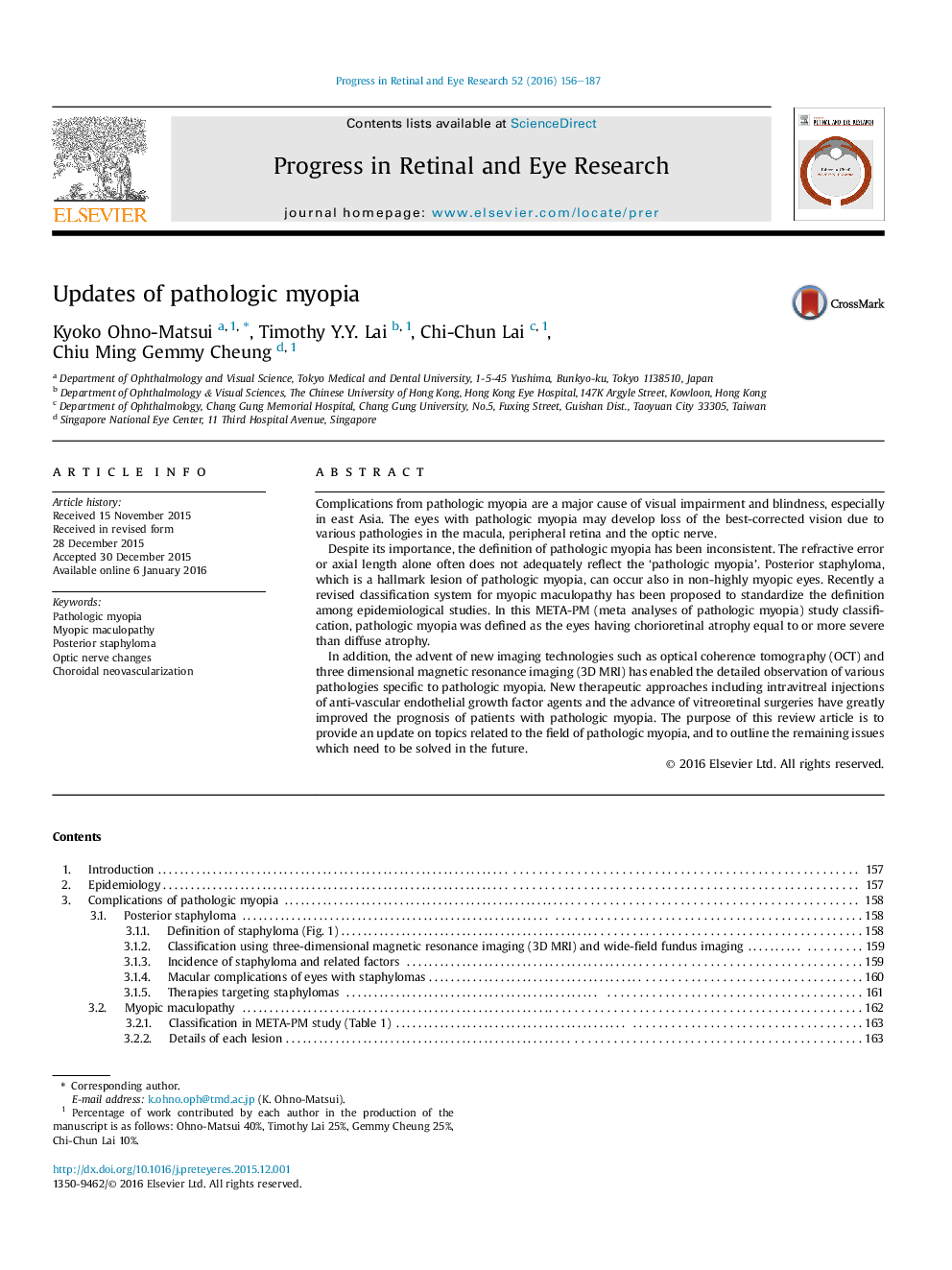| Article ID | Journal | Published Year | Pages | File Type |
|---|---|---|---|---|
| 6202694 | Progress in Retinal and Eye Research | 2016 | 32 Pages |
Complications from pathologic myopia are a major cause of visual impairment and blindness, especially in east Asia. The eyes with pathologic myopia may develop loss of the best-corrected vision due to various pathologies in the macula, peripheral retina and the optic nerve.Despite its importance, the definition of pathologic myopia has been inconsistent. The refractive error or axial length alone often does not adequately reflect the 'pathologic myopia'. Posterior staphyloma, which is a hallmark lesion of pathologic myopia, can occur also in non-highly myopic eyes. Recently a revised classification system for myopic maculopathy has been proposed to standardize the definition among epidemiological studies. In this META-PM (meta analyses of pathologic myopia) study classification, pathologic myopia was defined as the eyes having chorioretinal atrophy equal to or more severe than diffuse atrophy.In addition, the advent of new imaging technologies such as optical coherence tomography (OCT) and three dimensional magnetic resonance imaging (3D MRI) has enabled the detailed observation of various pathologies specific to pathologic myopia. New therapeutic approaches including intravitreal injections of anti-vascular endothelial growth factor agents and the advance of vitreoretinal surgeries have greatly improved the prognosis of patients with pathologic myopia. The purpose of this review article is to provide an update on topics related to the field of pathologic myopia, and to outline the remaining issues which need to be solved in the future.
